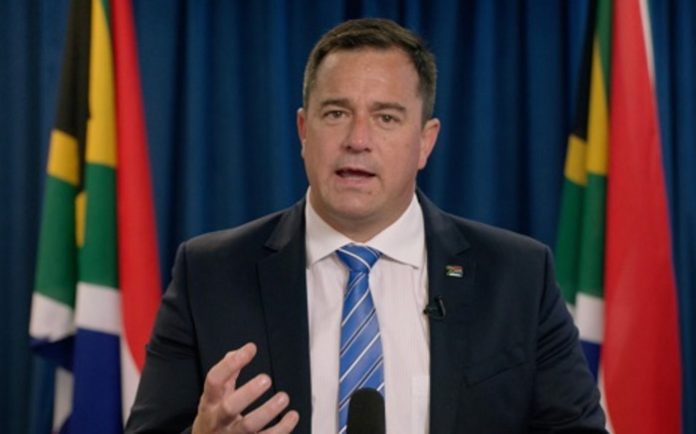A visit to the Port of Berbera on the coast of Somaliland is certainly not for the faint hearted. It is blistering hot in summer with temperatures that regularly breach the forties, a journey made more challenging by the occasional camel loping along the main road. It is however an essential trip for any policymaker who wants to witness the real value of taking decisive decisions as opposed to endless dithering.
Firstly some context. Thirty years ago Somaliland chose independence and broke away from Somalia in the midst of successive wars. When these were brought to a close by a series of internal peace conferences, much of the country had been stripped bare and laid waste.
And though it is formally unrecognised diplomatically by any other state, Somaliland has transformed into a thriving little democracy in the bad neighbourhood that is the Horn of Africa. Somaliland is surrounded by a collection of failed states and despotic dictators. Yet it continues to surprise the world with regular elections, changes in power and democratic advancement.
Somaliland stands out as a country which has developed its own peace model, from the bottom up, one reason why it holds. Despite its devastating civil war inheritance, Somaliland has become the ‘country that can’ in Africa.
Part of their success is their ability to make better choices for the future of their country and then to execute these with determination. Which brings me back to the Port of Berbera. Realising that the port was a strategic asset that had been muddling along inefficiently under the control of the state entity, the Somaliland Port Authority (SPA), a decision was made to unlock the potential and concession the port long-term to an International operator.
A deal with Dubai Ports World was a based on a 30-year concession in a 65:35 joint venture with the SPA. The result has been a massive expansion in port capacity, currently in phase 2 of the development. Phase 1 attracted over US$244 million of investment in infrastructure, equipment and systems. On top of this there has been a doubling of the tonnage of general cargo, break and break bulk and a massive five-fold increase in container handling capacity to 500,000 TEUs annually. Phase 2, currently underway, will see container capacity again quadruple, and the quayside and handling facilities further expand with a further $200 million of investment.
But it’s the improvement in efficiency which is most impressive. Berbera is now ranked at position 184 on the World Bank’s index of port efficiency. South Africa’s ports languish at the bottom of the table with Cape Town at position 365. That our ports are being outperformed by a port in a tiny unrecognised country which spent years ravaged by war should be serious wake-up call as to just how far behind we are.
The most remarkable part of this is that the timeline for Somaliland to rack up this incredible achievement was a mere three years from the day that the Somaliland Parliament passed the enabling legislation. Three years! Just let that sink in, I can’t think of a single major government project in South Africa that has come even close to a delivery timeline like this. On the contrary, projects like Medupi and Kusile have dragged on for decades, massively over budget and of course with all the requisite price gouging and rent seeking along the way. The difference is that a decision was made and it was actioned, no endless workshops, presidential commissions and interminable RFI, RFP, BEE processes that have become the norm in South Africa.
So what does Berbera have to do with South Africa?
Well, firstly it’s a wake-up call that we had better up our game and do something about our ports or else we stand to lose out to other more efficient ports on the continent. Secondly, sentiment and the romantic notion of some South African exceptionalism isn’t going to cut it. We need to live in the present, not in past glories. Our future lies in efficiency, price and service. We are lagging far behind on all of these. Thirdly the model used by Somaliland shows the value in government letting go and allowing in private sector expertise and efficiency to displace government malaise and inefficiency.
There is no way that Portnet and Transnet are going to be able to do what needs to be done. While ideologically understandable, government keeps trying to breathe life into these putrefying corpses and it’s simply an unjustified waste of the public’s good money. We should be seeking instead to emulate the Berbera model in all our ports.
On my recent visit to the NAMPO agricultural show, port efficiency was a common theme that came up in my various discussions with agricultural producers. Billions of Rands in trade are lost every year as port inefficiency is allowed to continue and our agricultural products rot at the quayside, destroying incomes and revenues as well as jobs. Local retailers and businesses too are not immune, with long delays for their goods to be landed and cleared, ironically with some of the most expensive port handling charges in the world.
The time for talking about reform has surely ended. It is now time for action. Instead of more commissions, task teams and presidential units (there are now over 27 at last count!) it’s time to start implementing. A good start would be to begin with the low-hanging fruit. Getting some of our 740 moribund state-owned entities out of the way, starting with our ports, could finally begin unblocking the obstacles they have put in the way of real expansion and growth. Concessioning our ports in public private partnerships with international experts and all the potential this offers shouldn’t take another decade of dithering.
The Somaliland example shows us, with the right decisions, the rewards of reform can be quickly reaped. With such leadership, we too could become a ‘country that can’.

Politics Web




























